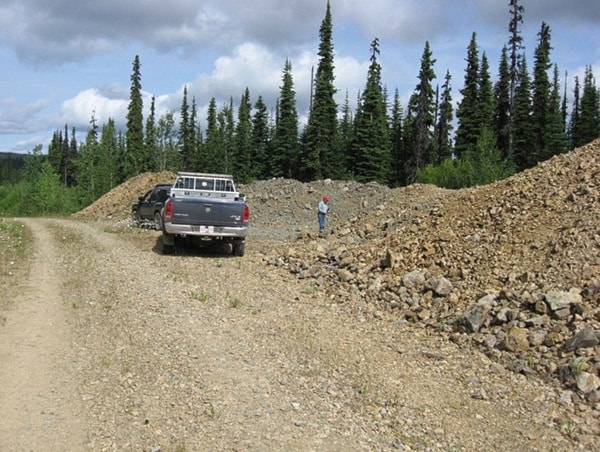The next big mining project in British Columbia could be just up the road from Burns Lake.
If two experienced B.C. mineral explorers are correct, there could be a large deposit of molybdenum, copper, and silver in the hills around Burns Lake. They’ve acquired mineral rights to the Boer property, 6300 hectares of land just northeast of Burns Lake accessed by the Augier and Co-op logging roads.
John A. Chapman, an independent professional engineer with more than four decades of mining experience, and Gerald G. Carlson, on behalf of KGE Management Ltd., have recently made the property available for option.
The Boer property is one of 17 properties to which they own mineral rights. In total, they have rights to over 100,000 hectares throughout British Columbia. Nine of those properties have already been optioned to junior companies.
“What drew us in [to Burns Lake] was the high silver content of the lake sediment in the area,” said Chapman. “Somewhere in the Lakes District there should be a high-grade source of base metals or silver.”
While their initial claim was based on lake and stream sediment geochemistry uncovered during a study that began in 2008, they have since made chance discoveries that have confirmed their initial data.
“We made one discovery right on the [Co-op] logging road,” Chapman recounted. “There was a [rock] hump that the Burns Lake Community Forest people drilled and blasted to make a quarry.
The gravel was intended for road-building, but lo-and-behold, it’s mineralized.”
“There’s low grade copper, moly and silver,” he said. “Nobody recognized it until we drove up.”
“If that [logging road] had been in the Kootenays, within a week local, prospectors would have found it,” Chapman said. “It means that you don’t have any prospectors who are out in the bush prospecting in the Burns Lake area.”
According to Chapman, the Kootenays have a strong contingent of prospectors because of well-organized local mining groups like the Nelson-based Chamber of Mines of Eastern B.C. which arranges yearly courses through the local college. Chapman recalls that local colleges in Northern B.C. used to offer courses in prospecting, but they have since stopped making them available in the communities where they could be best utilized.
“It would only take a week to learn to be a prospector,” Chapman said.
He would like to see programs and classes offered locally so that Northern B.C. could continue its history of large mining discoveries.
“If you look through the historical record, you’ll find that most of the big mines like Endako and Gibraltar were discovered by local prospectors,” Chapman said. “They weren’t discovered by big companies.”
Chapman recalls the discovery of the Endako Mine.
“Endako was discovered in 1927 by Mr. Foot, of Fraser Lake,” Chapman said. “He was on a hunting trip with his partner. They were trained as prospectors so they recognized the mineralization [when they came upon it].”
Now that Chapman and Carlson, modern day prospectors, are actively advertising the Boer property for development.
“What normally happens is that a prospector discovers a deposit and then a junior company comes in and spends about a million dollars on development,” Chapman said. “If that goes well, then a major company will come in and option it from the junior company. Both the junior company and the prospector do very well.”
Despite the history of successful mining in Northern B.C., Chapman said it hasn’t been a good year to find investors for the kind of risky work it takes to discover the next big mine.
“We’ve been in business 12 years with these properties and this year [2012] has probably been the most difficult,” Chapman recounted. “It’s been difficult for junior companies to raise money for risky projects.”
Chapman cites a number of factors which has chilled mining exploration in B.C. In April, 2012, B.C. changed mining regulations which made it more expensive to make mineral claims. Chapman noted that the claim for the Boer property cost him and his partner only $3000 when they made it. If they had made the claim under the new regulations, they would have spent over $10,000.
He doesn’t think that people appreciate how globally-oriented mining has become.
“Mining is very international, including the Vancouver group [of investors],” Chapman said. “They look at places in Africa, South America, Europe and here in Canada. If regulations or labour or native issues are bad, they just go somewhere else.”
Chapman said it is important for First Nations and natural resource developers to work together.
As for the Boer property, despite what Chapman describes as the ‘gloomiest year in mining’ in his career, investor interest remains.
“On the Boer, property we’ve had three parties show an interest,” Chapman said. “One dropped away, saying they had decided not to do anymore exploration in the area. But the other two are still looking at it.
